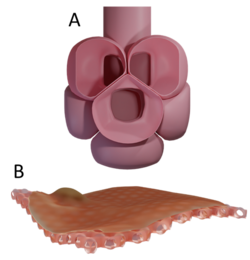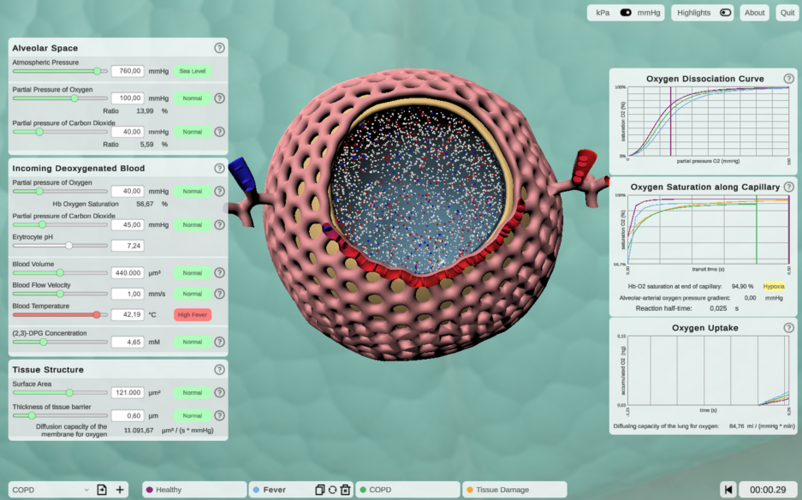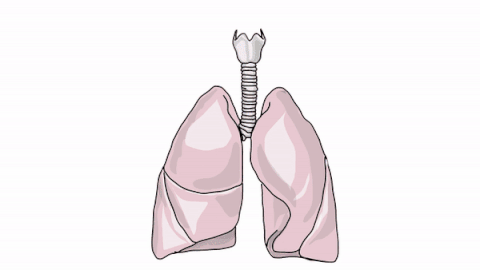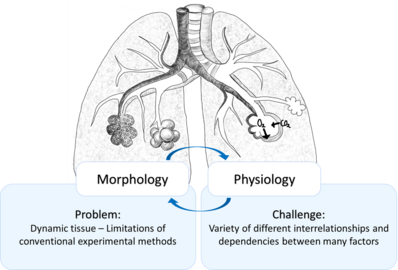3D Tissue Modelling
We create a virtual model of human lung tissue. More specifically of an alveolus - the smallest functional unit of the lung.
The lung is a vital and well-researched organ. However, as current events show, pulmonary diseases can still bring us to our limits. Investigation of lung morphology via classic, experimental methods is limited since this tissue is very dynamic. In addition, functionality - gas exchange in the lungs - is influenced by a variety of physiological factors. It is a challenge to obtain and communicate an overview of the different interdependencies.

Similar to a puzzle, we collect individual information from the literature and piece them together to create a complete model. We use the powerful 3D modeling software blender (https://www.blender.org/) to recreate morphological features. In collaboration with the Games Engineering group (https://games.uni-wuerzburg.de/about/), we implemented an interactive simulation of gas exchange in Unity (https://unity.com/). The resulting application was named Alvin. In Alvin, you can configure model parameters and explore dependencies and correlations that govern the process of gas exchange. Alvin has also been tested for educational use. In collaboration with Prof. Dr. Pfeiffer (https://www.biozentrum.uni-wuerzburg.de/zoo2/forschung/ag-pfeiffer/), the app was successfully integrated into a virtual physiology lab course.
Screenshot of Alvin. A three-dimensional model of an alveolus in the center illustrates the simulation process. Essential model parameters can be configured on the left. Quantitative output is provided by the dynamic graphs on the right. A key feature of Alvin is the possibility to run several simulation instances simulatiously. Simulation instances are created and managed in the instance menu on the bottom. Alvin is available for download: https://github.com/scfischer/schmid-et-al-2022. If you use Alvin, we would greatly appreciate your feedback (sabine.fischer@uni-wuerzburg.de ).






